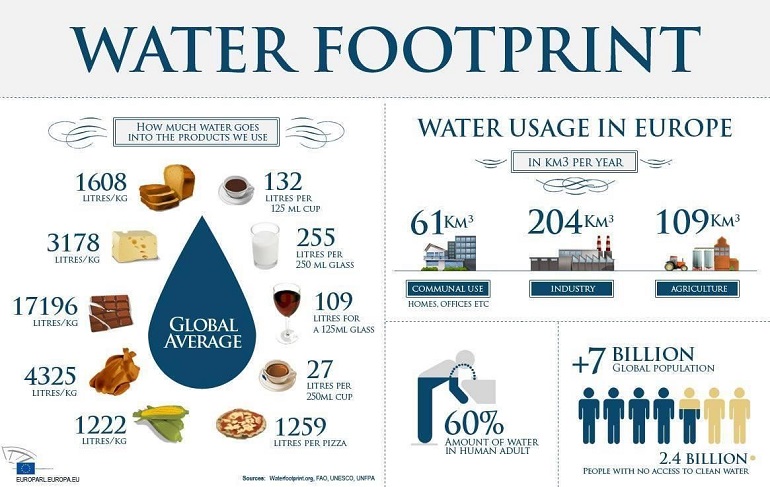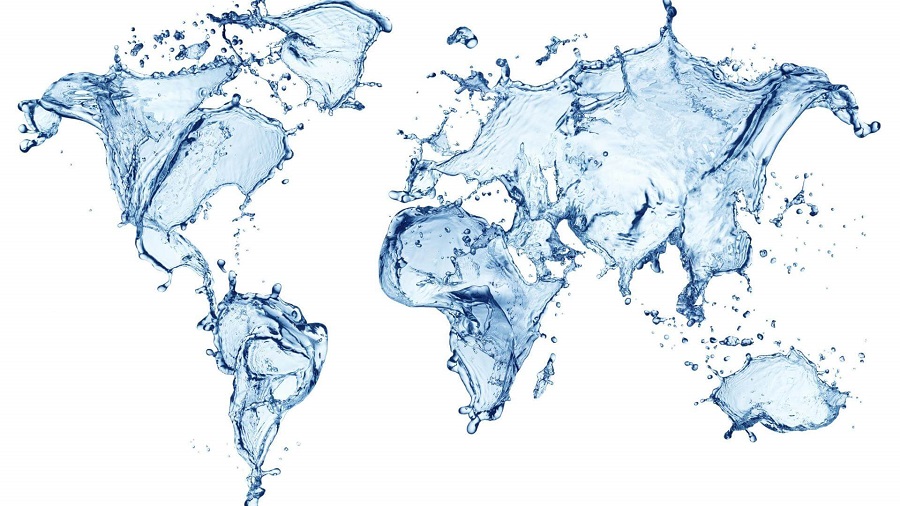Water; The most important part of our life and our source of life! It is impossible to think of a life without water and we are consuming the world resources in terms of energy, water, food and underground resources quickly! Well, if you are asked a question and how much water do you consume per day for drinking, washing and other needs? Your answer is drinking 2 liters of water, 6 liters go to the dishes, I can spend 20 liters for personal cleaning. Is that really the amount of water you spend? The amount of water spent on creating the coffee you drink, the foods you consume, and other services you use? In this article, we will focus on the concept of water footprint and the concept of water you consume virtually!
First, the concept of water footprint is how it turned out, the water footprint of what is, and what are international practices in Turkey?
The concept of Water Footprint was first introduced in 2002 by Arjen Hoekstra in UNESCO-IHE. Water footprint of a product; it is similar to the virtual water content of the product or to different terms called the product’s hidden, buried, external or shade water. Water Footprint is a new concept that provides an understanding of the role that water plays in the economy and the use of water management as a tool in economic development processes. Investigation of a country’s water footprint provides information that follows the direction of water in economic activities, which forms the basis for planners, decision-makers and investors’ decisions on allocation, trade, competitive advantage and ecosystem support. The concept of water footprint was developed by Twente University in the Netherlands and the Water Footprint Network Water Footprint Network-WFN. Water footprint, which refers to the measurement of the amount of fresh water required to produce a good or service within the entire supply chain; It covers the entire process from raw material processing to direct operations and consumer use of the product. The concept of water footprint takes into account both direct water use and indirect water use in the production process. Water Footprint is measured by the amount of evaporation and / or contaminated water spent per unit time. Water footprint of an individual, society or line of business; It is the total amount of clean water resources used for the production of goods and services consumed by the individual or society or used by the manufacturer for the production of goods and services. The concept of water footprint is an alternative indicator for water use. The water footprint, which examines the amount of water consumed instead of the amount of water drawn from the system, is different from traditional water statistics in this sense. Blue, green and gray water footprint; Water is the three components that represent water use and quality in the footprint. The concept and framework of the Water Footprint brings a new perspective to water resources management by addressing factors such as population growth, economic growth and climate change.

The water footprint can be calculated for an institution, product, service, individual, or community. Under the concept of water footprint, different classifications are made as the amount of fresh water used in Blue, Green rain water and the amount of water used to eliminate the pollution load according to Gray standards. The Blue Water Footprint is used for the total volume of surface and groundwater freshwater resources needed to produce a good and traditionally comes to mind when it comes to fresh water. Green Water Footprint is the total rainwater used in the production of a good. However, the rainwater mentioned in the green water footprint does not disappear or mix into groundwater; It is stored in the soil or on the soil for a while. Since the amount of precipitation affects green water supply and demand, climate change and variability should be taken into account when evaluating the green water requirement of the region. The Gray Water Footprint is an indicator for pollution. It refers to the amount of fresh water used to eliminate or reduce the pollution burden based on current water quality standards. Therefore, the concept of gray water is handled in relation to population and industrial growth.
The concept of footprint in water is an important tool for determining the amount of water used from the production to the consumption of every goods and service consumed. For example, it is thought that about 200 ml of water is consumed to drink a cup of coffee, but when the amount of water consumed during the production of coffee is taken into account, the total amount of water consumed for a cup of coffee increases to 140 liters, that is, about 70 cups. Likewise, a footprint is left in 40 liters for a slice of bread and 1,500 liters for 1 kg of sugar.
Water Foodprint Network (WFN) website is the most basic resource you will use in your researches on an international basis. You can access the water footprint concept, concepts, application areas and good practice examples on the site. You can also find many sources in the search engines with the keyword “water footprint”.
Wishing you to pay attention to water consumption, knowing the value of water.
Gökhan Turgut Ünal
StudyIngram Editor





